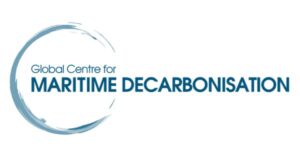
The Global Centre for Maritime Decarbonisation and the Society for Gas as a Marine Fuel will collaborate on new guidelines for ammonia as a marine fuel. The work will help build towards ammonia bunkering demonstrations in Singapore.

The Global Centre for Maritime Decarbonisation and the Society for Gas as a Marine Fuel will collaborate on new guidelines for ammonia as a marine fuel. The work will help build towards ammonia bunkering demonstrations in Singapore.
The Global Centre for Maritime Decarbonisation released the public findings from its Ammonia bunkering pilot safety study last month. Three potential pilot sites have been identified in Singapore, and a combined HAZID - QRA methodology has found that 400 operational and locational risks for ammonia bunkering were all classed as low or mitigable. Sign up for our upcoming Ammonia Energy APAC conference in August to learn more, when GCMD Chief Technical Officer Dr. Sanjay Kuttan will join us in-person to explore the report and answer your key questions.
A recent survey reveals how shipping industry leaders see the maritime fuel transition progressing. With conventional ship engines set to remain the preferred technology until at least 2050, almost all the survey respondents saw their fleets running on a mix of fuels by that date. Although methanol & ammonia are likely to be adopted at scale, respondents do not currently see any of the new fuels emerging as an industry standard, with key choices ahead for shipping companies, fuel producers, bunker providers and industry regulators.
In maritime ammonia updates this week:
Singapore’s sovereign wealth fund GIC and UK-based Carlyle will both invest in the development of Eneus Energy’s renewable ammonia project pipeline, with plants in the US and UK planned. The Maritime & Port Authority Singapore and Port of Rotterdam have agreed to establish a green maritime corridor by 2027. The agreement will help accelerate the deployment of alternative maritime fuels like ammonia on the critical shipping route, which links two of the world’s largest bunkering ports. And a trio of organisations - PaxOcean Engineering, Hong Lam Marine and Bureau Veritas will jointly develop an ammonia bunkering vessel design.
Two recent reports (one from Bureau Veritas & Total, the other from the Together in Safety consortium) illustrate just how seriously the maritime industry is pursuing low carbon ammonia fuel. While progress in the maritime ammonia space is impressive, safety risks are widely-acknowledged and work remains to be done.
Both reports identify key hazards facing adoption of ammonia as a maritime fuel, and echo points heard before in the development of methanol & LNG as maritime fuels: high-risk hazards currently exist that must be eliminated, mitigated or controlled. But Together in Safety concludes the way forward will be via collaboration & shared responsibility - something we’re already seeing in the multiple high-profile safety studies and consortia working around the globe. Thankfully, the willingness of significant maritime players to engage on ammonia and the momentum for change are both high.
Our latest episode of Maritime Ammonia Insights revealed key details about the Ammonia Bunkering Safety Study currently being undertaken in Singapore. The study is led by the Global Center for Maritime Decarbonisation (GCMD), with DNV acting as a consulting partner. Lau Wei Jie (GCMD) took us through the high-profile lineup of study partners, and explained how the study aims to develop an extensive technical guideline for ammonia bunkering, similar to TR 56 (which covers LNG bunkering). Dr. Imran Ibrahim (DNV Maritime Advisory), then explained the technical scope of the study, how pilot project sites will be selected, and how the study partners are using previous work from Rotterdam and Oslo to hone their approach. Our audience was eager to understand how this work in Singapore might be applied elsewhere, and keenly awaits the results, which are due for public release in February 2023.
Two maritime ammonia heavyweights - the Global Centre for Maritime Decarbonisation and the Mærsk Mc-Kinney Møller Center - have signed a long-term agreement to accelerate the maritime industry’s decarbonisation efforts. The Global Centre for Maritime Decarbonisation is currently overseeing a comprehensive ammonia bunkering study that will enable ammonia bunkering trials to proceed at two Singapore locations to start in 2023.